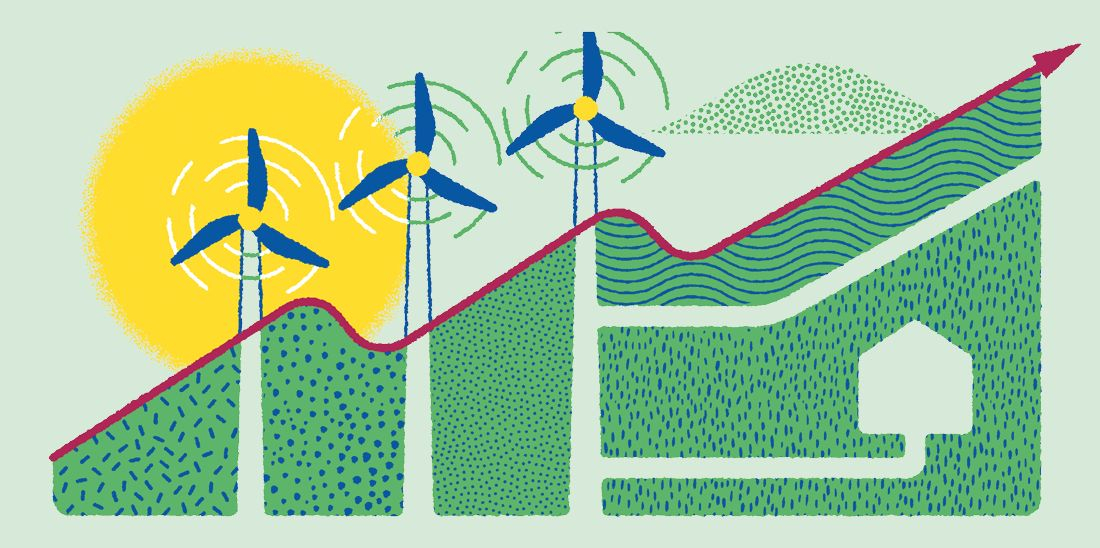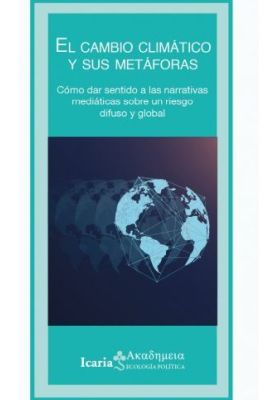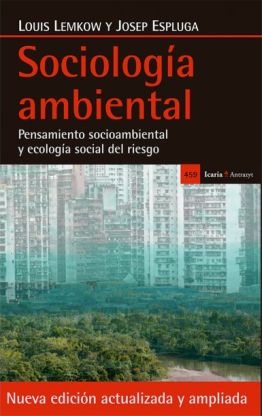Perceptions and conflicts surrounding energy use
A new energy model for the city
- Dossier
- Jan 23
- 9 mins

Besides energy prices, one of the main public concerns, there is another unresolved issue: the opposition generated by the location of energy infrastructures, particularly renewable energy infrastructures. While, as it would seem, the reasons lie predominantly in concerns over the threat to livelihoods, perceptions of comparative grievances between territories, or the loss of faith in institutions, the resolution is highly complex and would call for a process of forging links to develop projects in which everyone can feel acknowledged.
Eurobarometer surveys, conducted every six months among the European population, include the following question: “What are the two most important issues facing your country at the moment?” One of the most common answers is concern over “energy, climate and environmental issues”. Surveys from 2015 to 2022 reveal an increasing number of people with this concern, which dropped slightly in the year of the pandemic (when the hierarchies of concerns shifted), but which has been picking up again sharply in the last two years. From 2020 onwards, the Eurobarometer data presentation is broken down between “environmental and climate change issues” and “energy supply issues”, showing the distinction in the perceived importance of the two issues. During the years 2021 and 2022, concerns over energy supply far outweighed other issues and, in the case of Spain, were twice as high: 12% of people are concerned about the environment and climate change, and 25% are concerned about energy supply. The percentages are even higher for the European population as a whole.
Based on these figures, we can posit the hypothesis that environmental concerns (including climate change) and those related to energy access are two phenomena governed by different social rationales. It is noted that the former continue to be one of the major problems (20% of the European population considers this to be the case, 12% in the case of Spain, according to figures for 2022). However, it should be borne in mind that what people think is one thing, what they say is another, and what they do is yet another. The fact that the European population expresses this opinion does not necessarily mean that it has to be translated into actions or behaviour consistent with this concern.
For example, a recent study on the pattern of perceptions of climate change in Catalonia (Espluga Trenc, 2019) based on a comparison of discourses between those who are aware of/concerned about climate change and those who are sceptics/denialists shows that they are based on stereotypes that are unlikely to stand up to systematic deliberation. As presented in the media, climate change rarely questions individuals, but abstract (and perceived as remote) entities such as countries, states, governments, corporations, international NGOs, etc., which makes it difficult for people to perceive it as part of their everyday lives. Moreover, people see a contradiction between the urgency the problem demands and the tardiness of policy responses, which leads to a certain lack of faith in the reality of the problem and, especially, in the institutions in charge of handling its solutions.
It is also noted that defining it as a “catastrophe” in an attempt to stress its urgency can lead to fatalistic and passive attitudes amongst the population. A situation arises that risk perception studies have described as “active ignorance”, a concept that refers to those situations in which the lack of capacity to act, or excessive dependence on other actors, makes people prefer not to have more information about a risk, to disengage and to see exposure to the risk as a fatality in the face that is not worth doing anything about. Hence, people can be extremely concerned and do nothing to address the problem.
The same does not apply to perceptions of the energy crisis. Unlike climate change, energy consumption is something much more tangible, something that everyone has direct experience of, and something that is an inextricable part of our day-to-day lives.
Growing energy poverty
According to figures from the Survey on Living Conditions 2021 published by Idescat, the Statistical Institute of Catalonia, the percentage of people in Catalonia who cannot keep their homes at an adequate temperature rose from 9.4% in 2020 to 15.9% in 2021. Despite being a long-standing problem, in Catalonia and Spain, unlike in the rest of Europe, the situation has become considerably worse since the pandemic and up to the present day.
While citizens may have an attitude of “active ignorance” towards climate change (being extremely concerned, but taking no action to solve the problem), the same cannot be said of the energy crisis.
The social concern that this situation represents is also reflected in the opinion barometers of the Sociological Studies Centre (CIS), which periodically asks what are the three problems that most concern the population. This is an open-ended question, so as not to influence the answer, which is coded later on. The historical evolution of this question shows that one of the growing concerns is the rise in electricity prices, which now ranks above concerns over political, housing or educational problems. Only economic problems, unemployment, health, the environment and quality of employment are ahead of concerns over energy access (in a long list of 68 perceived problems), which gives us an idea of the importance the issue has acquired. In the last two years, the percentage of respondents who believe that this is an issue of concern has risen from a very small minority (0.1%) to 9%-11%.
The Consell Assessor per al Desenvolupament Sostenible [Advisory Council for Sustainable Development] produced a report (CADS 3/2014) in which three causes of energy poverty were identified: high energy prices (electricity, gas, etc.), insufficient quality of housing and reduced income levels. Perhaps an adverse legal framework that is favourable to electricity oligopolies should also be added.
Studies on energy poverty show that people exposed to this risk do act accordingly and engage in careful energy-saving behaviour (Delgado and Lopez, 2020). In this context, policy measures aimed at facilitating energy access become an indispensable kind of social policy, with very clear beneficiaries.
The infrastructure impasse
The other issue of conflict concerns infrastructures. All energy systems need to roll out infrastructures throughout the territory in the form of power plants, cables, pipelines, towers, warehouses, etc. Generally speaking, these elements are not very visible to the general public and are located in sparsely inhabited or peripheral areas, which means that they go unnoticed except by the communities affected, who tend to be minorities with limited decision-making power. For years, the maps of environmental disputes published in Catalonia (that of the Ecologistes de Catalunya federation in 2009, that of the Territorial Sustainability Centre in 2016, that published by the newspaper Crític in 2020 and the environmental justice atlas by the Institute for Environmental Science and Technology (ICTA-UAB)) have shown that a significant number of these conflicts are related to the location of energy infrastructures, particularly renewable energy infrastructures.
According to risk perception theories, opposition or rejection of a technology, activity or infrastructure is rooted in a series of factors. One factor relates to the perception of possible harm to health, biodiversity or the environment in general; another concerns the perception of potential economic losses; a third set of reasons involves the perception of threats to the affected population’s networks of social relations, ways of life, landscapes, local identities, etc.; and finally, a fourth set of factors would include the perception of situations of injustice or inequity, of comparative grievances with other territories or populations, and, above all, the loss of faith in the institutions that promote, manage or regulate these technologies, activities or infrastructures.
To understand the protests against renewable energy infrastructures in Catalonia, we should consider which of these four dimensions predominates in each case. If the grounds for the conflict were primarily environmental concerns or economic losses, efforts could be made to mitigate the conflict by providing greater guarantees of environmental respect or more favourable compensation for the affected populations. While, as it would seem, the reasons lie predominantly in concerns over the threat to livelihoods, perceptions of comparative grievances between territories, or the loss of faith in institutions, the resolution is highly complex and would call for a process of forging links to develop projects in which everyone can feel acknowledged.
The manner in which many renewable energy projects have been designed and presented shares an excessive number of characteristics with “extractivist” models, which consist of exploiting a resource in a territory without providing many benefits in return, but rather leaving behind many problems and risks. Some studies have shown that, given the manner in which renewable energy projects have been implemented thus far, few benefits remain in the territory (Saladié, 2018) and, on the other hand, endogenous development options are limited and compromised in the long term. The history of energy infrastructures in Catalonia is littered with similar cases. The management of these conflicts would require long-term planning and more inclusive procedures for citizen involvement. For the time being, we probably have neither one nor the other.
Conclusion
We tend to think of the energy transition as the replacement of fossil fuels with renewable sources. But energy is not just a commodity that we can buy and sell; it is a prerequisite that makes all other social and economic activities possible. This is why the energy transition cannot be considered without a transition to production and consumption patterns that are different from today’s.
This is one of the primary focal points of the socio-ideological conflict linked to energy. For example, in the aforementioned study on perceptions of climate change, what seemed to differentiate the two groups, sceptics and those concerned, was that the latter would be willing to change their way of life, while the former would prefer not to do so (some because of clear ideological support for the current socio-economic model; others because they perceived the costs of transition as beyond their means). If we do not want the development of renewable energies to pose similar problems to those of fossil fuels, we will need political systems capable of facilitating discussion and consensus, new forms of social cooperation, new technologies and, above all, new ways of thinking and acting, new narratives that allow us to redefine socio-economic models in a fairer and more sustainable manner.
References
CADS (Consell Assessor per al Desenvolupament Sostenible). Els reptes energètics de Catalunya en l’horitzó 2030. Informe CADS 3/2014. http://ow.ly/IO3V50LueVm. Open in a new window
Idescat. Privaciones de los hogares: Población que no puede mantener el hogar adecuadamente caliente. 2022. http://ow.ly/4S9A50LueYQ. Open in a new window
Delgado, L. and López, D. (coordinación). Emergencia habitacional, pobreza energética y salud. Observatori DESC, Agència de Salut Pública, Enginyeria Sense Fronteres, Aliança contra la Pobresa Energètica and Plataforma de Afectadas por la Hipoteca (PAH) de Barcelona, 2020.
Espluga Trenc, J., Ruscheinsky, A. and Prades, A. El concepto de riesgo y su aplicación al análisis de conflictos socioambientales. In Vallejos-Romero, A., Valencia Hernández, J. and Boso, Á (eds.). Riesgos, Gobernanza y Conflictos Socioambientales. Ediciones Universidad de La Frontera, 2018.
Espluga Trenc, J. El cambio climático y sus metáforas. Icaria, 2019.
Saladié, S. Conflicte entre el paisatge i l’energia eòlica. El cas de les comarques meridionals de Catalunya. Pagès Editors, 2018.
Recommended publications
 El cambio climático y sus metáforasDiversos autores. Icaria, 2020
El cambio climático y sus metáforasDiversos autores. Icaria, 2020 Sociología ambientalLouis Lemkow y Josep Espluga. Icaria Antrazyt, 2017
Sociología ambientalLouis Lemkow y Josep Espluga. Icaria Antrazyt, 2017
The newsletter
Subscribe to our newsletter to keep up to date with Barcelona Metròpolis' new developments




